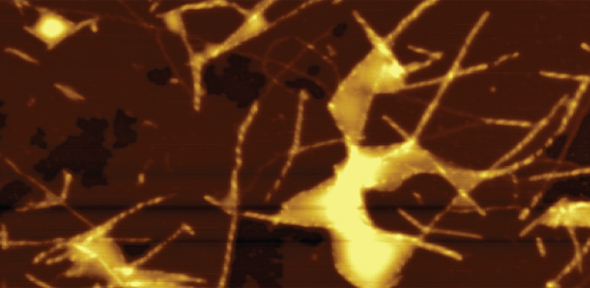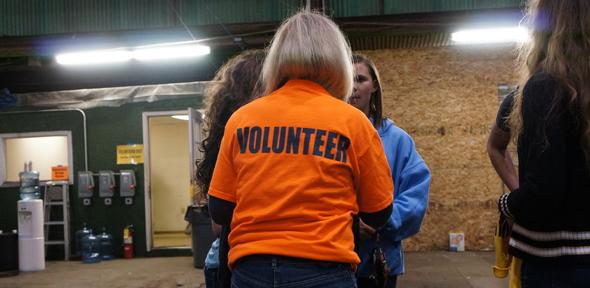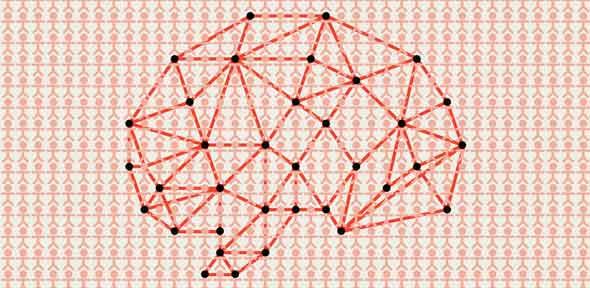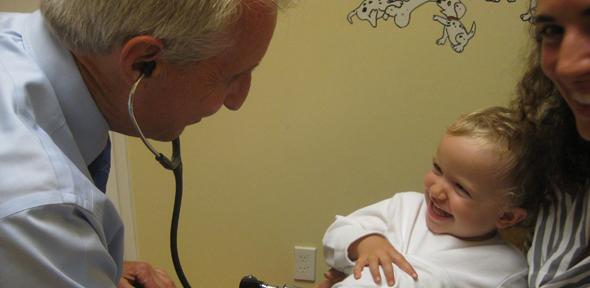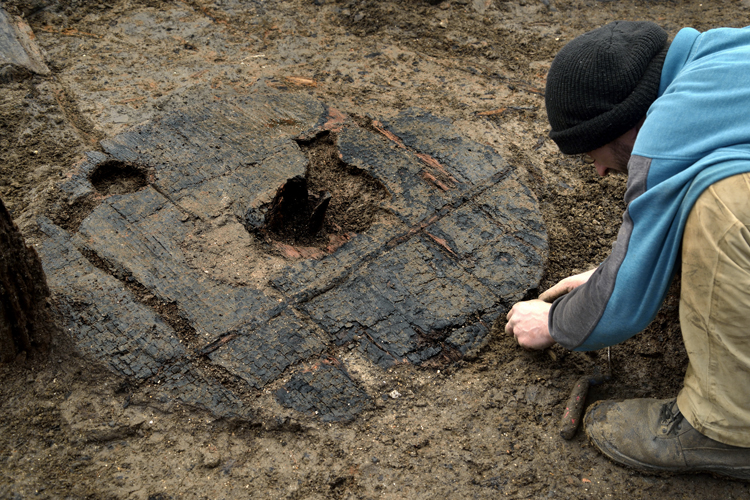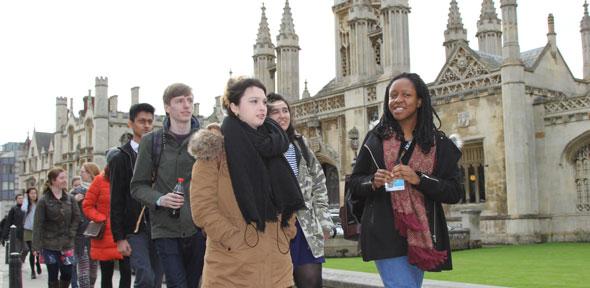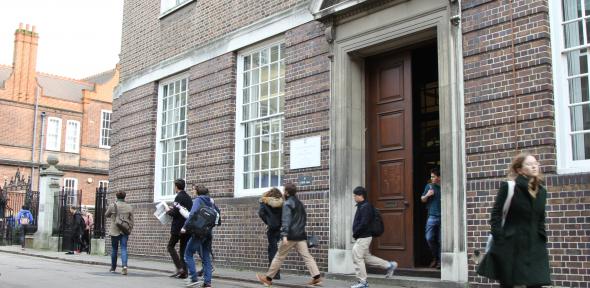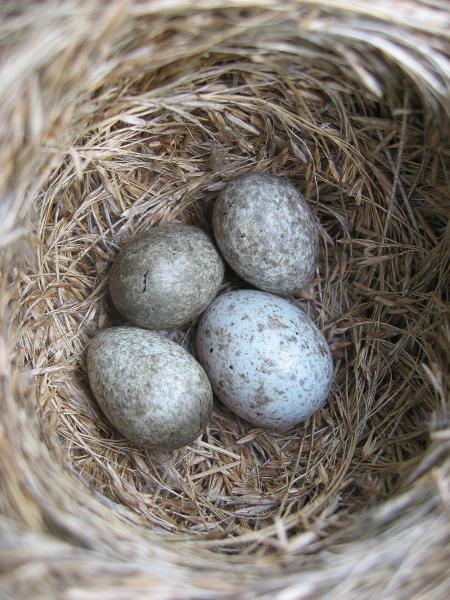
An international team of scientists have observed ripples in the fabric of spacetime called gravitational waves, arriving at the earth from a cataclysmic event in the distant universe. This confirms a major prediction of Albert Einstein’s 1915 general theory of relativity and opens an unprecedented new window onto the cosmos.
The gravitational waves were detected on 14 September 2015 at 09:51 UK time by both LIGO (Laser Interferometer Gravitational-wave Observatory) detectors in Louisiana and Washington State in the US. They originated from two black holes, each around 30 times the mass of the Sun and located more than 1.3 billion light years from Earth, coalescing to form a single, even more massive black hole.
The LIGO Observatories are funded by the National Science Foundation (NSF), and were conceived, built, and are operated by Caltech and MIT. The discovery, accepted for publication in the journal Physical Review Letters, was made by the LIGO Scientific Collaboration (which includes the GEO Collaboration and the Australian Consortium for Interferometric Gravitational Astronomy) and the Virgo Collaboration using data from the two LIGO detectors.
“The discovery of gravitational waves by the LIGO team is an incredible achievement,” said Professor Stephen Hawking, the Dennis Stanton Avery and Sally Tsui Wong-Avery Director of Research at the Department of Applied Mathematics and Theoretical Physics at the University of Cambridge. “It is the first observation of gravitational waves as predicted by Einstein and will allow us new insights into our universe. The gravitational waves were released from the collision of two black holes, the properties of which are consistent with predictions I made in Cambridge in the 1970s, such as the black hole area and uniqueness theorems. We can expect this observation to be the first of many as LIGO sensitivity increases, keeping us all busy with many further surprises.”
Gravitational waves carry unique information about the origins of our Universe and studying them is expected to provide important insights into the evolution of stars, supernovae, gamma-ray bursts, neutron stars and black holes. However, they interact very weakly with particles and require incredibly sensitive equipment to detect. British and German teams, including researchers from the University of Cambridge, working with US, Australian, Italian and French colleagues as part of the LIGO Scientific Collaboration and the Virgo Collaboration, are using a technique called laser interferometry.
Each LIGO site comprises two tubes, each four kilometres long, arranged in an L-shape. A laser is beamed down each tube to very precisely monitor the distance between mirrors at each end. According to Einstein’s theory, the distance between the mirrors will change by a tiny amount when a gravitational wave passes by the detector. A change in the lengths of the arms of close to 10-19 metres (just one-ten-thousandth the diameter of a proton) can be detected.
According to general relativity, a pair of black holes orbiting around each other lose energy through the emission of gravitational waves, causing them to gradually approach each other over billions of years, and then much more quickly in the final minutes. During the final fraction of a second, the two black holes collide into each other at nearly one-half the speed of light and form a single more massive black hole, converting a portion of the combined black holes’ mass to energy, according to Einstein’s formula E=mc2. This energy is emitted as a final strong burst of gravitational waves. It is these gravitational waves that LIGO has observed.
Independent and widely separated observatories are necessary to verify the direction of the event causing the gravitational waves, and also to determine that the signals come from space and are not from some other local phenomenon.
To ensure absolute accuracy, the consortium of nearly 1,000 scientists from 16 countries spent several months carefully checking and re-checking the data before submitting their findings for publication.
Christopher Moore, a PhD student from Cambridge’s Institute of Astronomy, was part of the discovery team who worked on the data analysis.
“Since September, we’ve known that something was detected, but it took months of checking to confirm that it was actually gravitational waves,” he said. “This team has been looking for evidence of gravitational waves for decades – a huge amount of work has gone into it, and I feel incredibly lucky to be part of the team. This discovery will change the way we do astronomy.”
Over coming years, the Advanced LIGO detectors will be ramped up to full power, increasing their sensitivity to gravitational waves, and in particular allowing more distant events to be measured. With the addition of further detectors, initially in Italy and later in other locations around the world, this first detection is surely just the beginning. UK scientists continue to contribute to the design and development of future generations of gravitational wave detectors.
The UK Minister for Universities and Science, Jo Johnson MP, said: “Einstein’s theories from over a century ago are still helping us to understand our universe. Now that we have the technological capability to test his theories with the LIGO detectors his scientific brilliance becomes all the more apparent. The Government is increasing support for international research collaborations, and these scientists from across the UK have played a vital part in this discovery.”
LIGO was originally proposed as a means of detecting these gravitational waves in the 1980s by Kip Thorne, Caltech’s Richard P. Feynman Professor of Theoretical Physics, Emeritus; Ronald Drever, professor of physics, emeritus also from Caltech; and Rainer Weiss, professor of physics, emeritus, from MIT.
“The description of this observation is beautifully described in the Einstein theory of General Relativity formulated 100 years ago and comprises the first test of the theory in strong gravitation. It would have been wonderful to watch Einstein’s face had we been able to tell him,” said Weiss.
“With this discovery, we humans are embarking on a marvelous new quest: the quest to explore the warped side of the universe—objects and phenomena that are made from warped spacetime. Colliding black holes and gravitational waves are our first beautiful examples,” said Thorne.
The discovery was made possible by the enhanced capabilities of Advanced LIGO, a major upgrade that increases the sensitivity of the instruments compared to the first generation LIGO detectors, enabling a large increase in the volume of the universe probed—and the discovery of gravitational waves during its first observation run.
The US National Science Foundation leads in financial support for Advanced LIGO. Funding organisations in Germany (Max Planck Society), the UK (Science and Technology Facilities Council, STFC) and Australia (Australian Research Council) also have made significant commitments to the project.
Several of the key technologies that made Advanced LIGO so much more sensitive have been developed and tested by the German UK GEO collaboration. Significant computer resources have been contributed by the AEI Hannover Atlas Cluster, the LIGO Laboratory, Syracuse University, and the University of Wisconsin-Milwaukee.
Several universities designed, built, and tested key components for Advanced LIGO: The Australian National University, the University of Adelaide, the University of Florida, Stanford University, Columbia University of New York, and Louisiana State University.
Cambridge has a long-standing involvement in the field of gravitational wave science, and specifically with the LIGO experiment. Until recently these efforts were spearheaded by Dr Jonathan Gair, who left last year for a post at the University of Edinburgh and who has made significant contributions to a wide range of gravitational wave and LIGO science; he is one of the authors on the new paper. Several scientists in Cambridge are current members of the collaboration, including PhD students Christopher Moore and Alvin Chua from the Institute of Astronomy; Professor Anthony Lasenby and PhD student Sonke Hee from the Cavendish Laboratory and the Kavli Institute of Cosmology; and Professor Mike Hobson from the Cavendish Laboratory.
Further members of the collaboration until recently based at Cambridge, include Dr Philip Graff (author on the detection paper) and Dr Farhan Feroz, who, jointly with Mike Hobson and Anthony Lasenby, developed a machine learning method of analysis used currently within LIGO, as well as Dr Christopher Berry (author) and Dr Priscilla Canizares.
These findings will be discussed at next month's Cambridge Science Festival during the open afternoon at the Institute of Astronomy.
New window on the universe is opened with the observation of gravitational waves – ripples in spacetime – caused by the collision of two black holes.

The text in this work is licensed under a Creative Commons Attribution 4.0 International License. For image use please see separate credits above.
